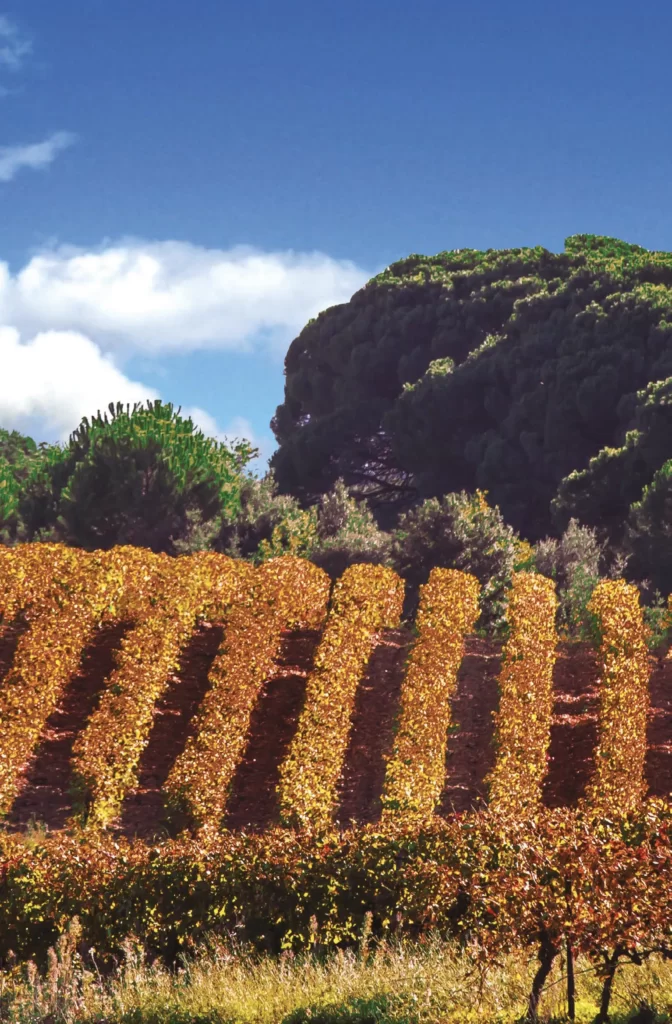Innovation and Biodiversity to create a unique ecosystem
The AOC Costières de Nîmes is today a leading and pioneer vineyard in environmental and landscape protection. This result is the culmination of nearly twenty years of efforts in supporting winegrowers.
The Costières de Nîmes are strongly committed to preserving ecosystems and fighting climate change…
…Around the soils
Stimulating microbial life
From the end of the harvest until the flowering of the vine, planting vegetation of green cover allows both to generate organic matter and to create micro- breaches in the soil allowing water and air to infiltrate, thus strengthening the life of the soils.
Pioneering Sustainable Alternatives to Chemical Pesticides
In autumn or early spring, it’s common to see flocks of sheep or goats roaming the vineyards of the Costières de Nîmes appellation. It involves allowing the herds to graze among the vines until flowering, avoiding the need for chemical herbicides.
Fighting against artificialization
The Costières de Nîmes vineyard is uniquely located in the heart of the Nîmes living basin, which is the object of very important land pressure which has led to the loss of 14% of its surfaces in fifteen years. Additionally, the 2023-2024 agri-environmental project enables the development of a multifaceted strategy to protect the appellation’s vineyards and agricultural lands. This includes raising awareness among local officials as well as ensuring the Syndicat des Vignerons des Costières de Nîmes has a voice in shaping various regional planning initiatives such as SCOT (Land Use Plan), PLU (Local Urban Plan), and PAT (Territorial Food Project).
8
Biodynamic operators
1033 hectares of land 54 commited operators
1950 hectares of land
154 commited operators
…Around biodiversity
Facilitating the installation of auxiliary fauna
Facilitating the installation of auxiliary fauna
The appellation of the Costières, not limited to viticulture, encompasses arboriculture, market gardening, and livestock farming. As part of its agro-environmental project, the appellation is installing 300 nest boxes for tits and bat shelters. The goal is to promote the nesting of species feeding on grape worms as well as leafhoppers of the golden flavescence. The nesting rate reached 45% in the first year. For that purpose, winemakers also set up agri-ecological infrastructures, such as stone piles, hedges, or groves.

In partnership with Cérès, producers of wild plants of local origin, they have defined a master plant scheme based on the landscape and environmental charter of the Costières de Nîmes. For the deployment of this plant palette, they will rely on the company PUR, a social purpose enterprise that aims to fight against deforestation, support farmers, and regenerate ecosystems.
In partnership with Cérès, producers of wild plants of local origin, they have defined a master plant scheme based on the landscape and environmental charter of the Costières de Nîmes. For the deployment of this plant palette, they will rely on the company PUR, a social purpose enterprise that aims to fight against deforestation, support farmers, and regenerate ecosystems.
…Around adaptation and experimentation
Introducing resistant grape varieties
As part of its agri-environmental project 2023- 2024, the appellation has brought together various parties engaged in experiments with grape varieties drought and diseases resistant (VIFA). In total, twenty-two winemakers have joined the project and will integrate these grape varieties to be experimented within the appellation’s specifications.
Implementing mulch in summer.
Some domains have implemented mulching strategies using the shredding of winter covers. The expected benefits are twofold: to lower the soil temperature on the one hand and to reduce water stress by preserving the moisture contained in the soils on the other hand.

